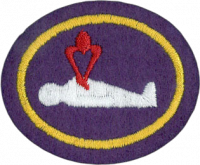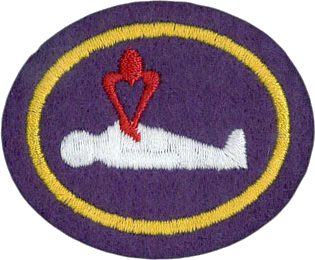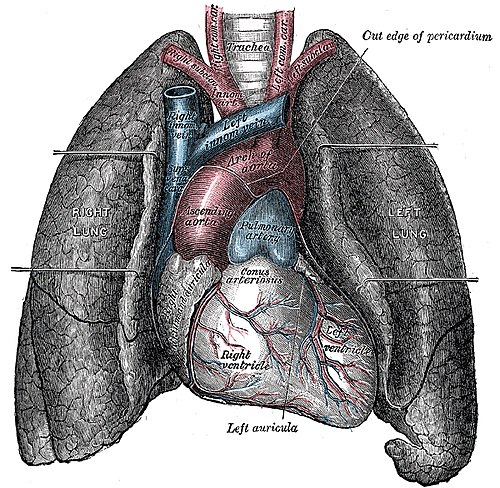| Line 6: | Line 6: | ||
<!-- 1. Successfully complete a class sponsored by either the American Heart Association, the American Red Cross, or an equivalent under a certified instructor in order to properly learn and demonstrate one-person CPR. This must be within the past 12 months. --> | <!-- 1. Successfully complete a class sponsored by either the American Heart Association, the American Red Cross, or an equivalent under a certified instructor in order to properly learn and demonstrate one-person CPR. This must be within the past 12 months. --> | ||
| − | + | {{:AY Honors/CPR/Certification}} | |
| − | |||
| − | |||
| − | |||
| − | |||
| − | |||
<!--T:27--> | <!--T:27--> | ||
Revision as of 14:44, 16 September 2021
1
You can find a class near you using one of the following web sites in the USA or search for the equivalent organization in your area:
These organizations both provide excellent training, but they do charge fees. It is possible to find people who are certified to teach CPR and who charge lower fees. Contact your Pathfinder Area Coordinator to see if they know of any Pathfinder staff within your conference who are qualified to offer this class.
2
The heart and lungs fill the upper chest cavity. The ribs and sternum form a cage that protects these vital organs. The heart is fairly central, with a lung on either side of it.
The lungs extract oxygen from inhaled air and inject it into the blood. The heart then pumps the oxygenated blood to the rest of the body. When a person performs CPR, the first task is to artificially fill the lungs with oxygen. This is done by rescue breathing. The second task is to move the oxygenated blood to the rest of the body - especially to the brain. This is accomplished by chest compressions (which squeeze the heart).
3
The chest compressions of CPR should only be performed if there is no pulse, but it is often difficult for non-professionals to sense the pulse. For this reason the current recommendations are that the non-professional should look for signs such as coughing, normal breathing, or movement. Checking for a pulse would waste valuable time in some circumstances. [math]\displaystyle{ _1 }[/math]
This may occur in:
- Electrocution
- Drowning
- Heart Attack
- Choking
- Shock
4
There are a number of factors that can affect a person's heart health.
- Smoking
- Smoking raises your risk of a heart attack by two to six times. In the United states 20% of all cardiovascular disease is related to smoking. The best advice is don't smoke.
- Diet
- Heart healthy diet- A well balanced diet can improve your heart health. You should eat more fruits (especially those high in vitamin C), nuts, and vegetables (especially leafy vegetables). Increase your intake of omega 3 fatty acids by eating flax, leafy vegetables, or fish and use olive oil rather than other "bad fats".
- Heart damaging diet- A diet rich in saturated fat, trans-fats, cholesterol, sugar and salt can damage your heart and blood vessels. Cholesterol is found only in animal products, and saturated fat is found in great quantities in meat, milk products, and eggs. Greasy or fried foods - especially the modern "Fast Food" diet - are very bad for your health.
- In Britain 50% of all deaths are from heart disease, but death from heart disease was found to be 28% less in vegetarians. Adventist's are known for their health message, but over the years, fewer and fewer people have adopted the health principles of the church, and there has been a noticeable increase in heart disease within the church. [math]\displaystyle{ _4 }[/math]
- Exercise
- Regular aerobic exercise keeps your heart (which is a large muscle) in good condition.
- Drink plenty of water
- To determine how much water you should drink to stay hydrated, take your body weight in pounds, and divide it by two. This is the number of ounces of water you should drink each day. The Adventist Health study found that those who drank 2 glasses a water per day had about 3 times more deaths from heart disease than those who drank 5 or more glasses per day.[1]
- Stress
- Stress raises your risk of heart problems.
- Heredity
- There is nothing you can do about your genetics - you may have inherited heart properties that are good or bad. If heart problems run in your family, it is even more important for you to address the risk factors you can control.
- Gender
- Men tend to have more heart disease than women although there has been some equalization in recent years as more women have started smoking.
5
See the Physical Fitness honor for setting up a personalized exercise program. If you opt for aerobic exercise and stick with it for one month, you may as well stick with the program for two more months and earn the Physical Fitness honor too.
This would also be a good opportunity to earn the Nutrition - Advanced honor (it requires that you track your diet for one week) and the Digestion honor (it requires that you track your diet for two weeks).
6
6a
6b
6c
6d
6e
References
1) American Heart Association Recommendations
2) Heimlich Institute
3) Coronary Health Improvement Project
4) Heart Health and Vegetarianism
5) Hydration improves heart health



